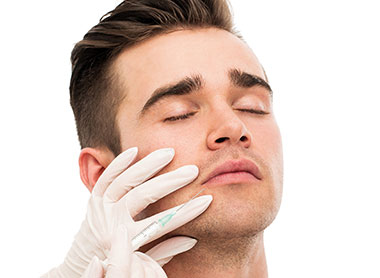Providing the patient realises that a good outcome is correction, and not always absolute perfection (since consummate ultra-accuracy not always achievable), this procedure may be considered as one of the most successful in the cosmetic surgery field. If you have discussed the procedure & your expectations with your plastic surgeon in greater detail before surgery, you will be happy with the outcome. By correcting protruding or deformed ears, the ear reshaping surgery may also contribute to higher self-confidence & self-esteem.
- Men - introduction
- Male genital surgery
- Male breast surgery - gynecomastia
- Abdominoplastics
- Liposuction
- Ear Reshaping Surgery - Otoplasty
- Nose reshaping surgery
- Eyelid Surgery
- Face and Neck Lift
- Happy lift Soft-Lift
- Injectable wrinkle treatments
- Laser treatments
- Gallery

Ear Reshaping Surgery - Otoplasty
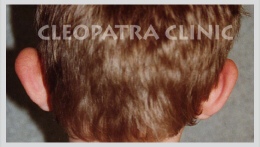
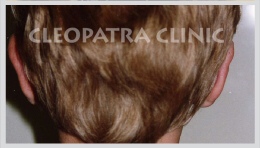

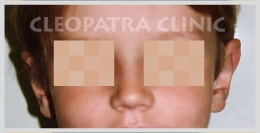
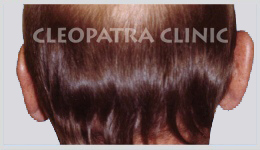
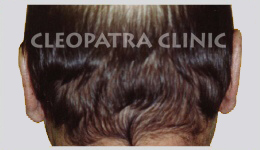
Gallery
Operations - both sides
before the procedure
after the procedure
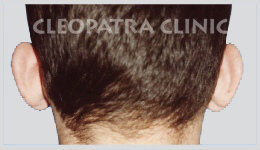
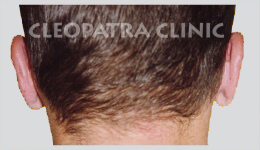
before the procedure
after the procedure


Operations - both sides
before the procedure
after the procedure


before the procedure
after the procedure


Introduction
Actor Brad Pitt has had his surgically pinned-back…and there are many people who think that USA President, Barack Obama, maybe would look a little better if he’d had his done…not that it’s ever too late for him! We’re talking now, about…ears.
Our genes define to a considerable extent the shape & size of our ears. From this viewpoint, the ears can vary greatly among individuals. Also, the left & right side may be considerably unbalanced. In the event that the ears are prominent or protruding, or their shape is not in line with the ‘established norms’ (for want of a better expression…), this anomaly tends to have psychological effects.
Protruding ears can make a child an intriguing target for their sniggering peers who constantly remind him, or her, of this ‘deformation’. The contemplation of yourself (lack of self-acceptance), incredulity & even hatred accompany this lack of proper social acceptance (mostly from your peers). Although adults do not usually experience this type of reactions, the bad childhood memories still can blight their minds.
What they do is to hide them under long hair or any headwear. But still, they are visible in windy weather, with wet or receding hair. Knowing this, Dr. Zakout and his colleagues are not surprised by a patient requesting otoplasty who is over the age of forty, fifty or even sixty! The oldest patient undergoing protruding ears surgery was 64! Since there is a large variety of protruding or deformed ears, each case must be treated differently.
In addition, each surgery can correct large, stretched or even split earlobes, or earlobes with deep creases & wrinkles. This will be discussed at the consultation. In cases where a pre-school child is traumatised by the deformation, we recommend to perform the correction earlier, but not before the age of 5. Most surgeons advise to have the procedure done just before starting school. Children of pre-school age usually fail to notice the deformation, so that the psychological trauma is minimised. However, as soon as the child starts school, the situation changes. In any case, the parents should carefully observe how their child perceives his protruding ears, including possible mental effects.
Advice for parents
- Don’t unnecessarily call your child’s attention to his/her ears, let the situation evolve.
- Although you would prefer to see your child with “normal” ears, never force him/her into the surgery until he/she wants.
- If the child requires the ear reshaping surgery, do encourage the child – you will prevent him, or her, from any mental & physical deprival.
What type of anaesthesia is used?
Ear surgery is usually performed under local anaesthesia. There is nothing to worry about since all you must endure is the quick moment of injection. After that, there’s about minute of stinging caused by the administering of anaesthetic solution into the ear. Subsequently, the surgery is painless. This is realizable even on psychologically-prepared children around 5-6 years of age! Still, if you really fear anticipating pain related to the ear surgery (even despite what has been mentioned), the operation can be carried out under general anaesthesia.
How long does the surgery take?
Ear surgery is performed in the ward and takes about 1 hour to 90 minutes.
What happens after the surgery?
As mentioned earlier, after surgery you will wear a thick bandage on your head in order to keep the new ear position; the healing & initial shaping process takes place at the same time. This also minimises swelling & haematoma-formation. Also, it reduces the risk of infection-penetration from the outside environment in the first days following surgery both during the day & at night. Although patients find the bandage the most irritating aspect (relatively) about the whole procedure (they cannot scratch their itchy ears!), it is essential if we want to achieve an optimal result. The bandage remains on your head for ten days; after it has been removed you will be encouraged to wear a headband for about 6 weeks. The headband will protect the ears from any accidental injury that may occur during sleep.
What kind of after effect should I expect?
After the bandage has been removed, you should expect ear swelling & reddening. Bruising usually subsides within 3 weeks, swelling subsides over two months period following surgery. Despite the swelling, the result will be visible immediately after the bandage removal. Ear numbness is a common after effect, which will eventually improve, but it can even take 2 to 3 months. There are also patients who experience oversensitivity of their ears, pulsing aches or discomfort especially in chilly weather. Again, this will gradually subside. It is advisable to avoid contact sports for three months, as your ears will still be sensitive enough to damage due to potential injury. The final result may be observed after 2-3 months when all the swelling subsides, and the ears “settle down”.
Is it painful?
In the first three days or so, your ears will be quite painful, more at night. This should be, however, well controlled by painkillers, which you will be given after surgery. The pain will quickly subside around three days following the operation, and there will be no need for painkillers, and the pain will totally disappear. But even here, Dr. Zakout and his colleagues encounter very different experience of postoperative soreness. Some patients experience no soreness at all, whereas others feel considerable pain. However what has been mentioned in the first paragraph applies to most cases.
What could go wrong?
Every surgical intervention carries certain risks. When ear reshaping surgery is performed by a qualified plastic surgeon, complications are infrequent & usually minor. Still, individuals vary greatly in their anatomy, physical reactions, & healing abilities. The result is never completely predictable. Probably the most common complication is remaining unevenness & irregularity of the cartilage when looking at the ear from the front & side. It must be emphasised, though, that both ears are never exactly identical, not even in the original/normal state and that utterly perfect symmetry would not, therefore, be a reasonable expectation. A certain degree of irregularity may however require another correction.
Minor infection around the incision sites occurs very rarely. While performing many hundreds of ear surgery procedures, Dr. Zakout & Dr. Lucák have never found it necessary to administer antibiotics. As in any procedure the risk of bleeding is always possible. Despite all efforts to stop the bleeding from small blood vessels during surgery, some of the vessels may begin to bleed postoperatively. Then a haematoma develops (a collection of blood under the skin). For this reason you will have a bandage & pads on your head in order to minimize the ‘pooling’of blood.
Occasionally may a scarring defect occur as a result of increased bleeding or, less ideally (but rare), intolerance to the stitches used. It usually heals within 7 days through local ointment application. Worse intolerance to the internal stitches used may cause the body to secrete (purge) a smaller or bigger amount of these stitches. If this happens after three months, it does not influence the recurrence of protruding ears. Ear reshaping surgery does not interfere with the auditory organ in any way since critical hearing-mechanisms are located in the bony inner ear and so no damage is possible. You can reduce your risks by closely following preoperative & postoperative instructions given by Dr. Zakout and his colleagues.
Is it possible for the ears to return to their initial position?
Recurrence cannot be excluded. The following are possible causes. With respect to the anatomical structure of the ear, the cartilage may have a strong proneness to returning to its original position disregarding the surgical technique used. In addition, any healing complications may lead to losing the outcome the surgeon had strived-for. This includes not only healing complications but also ear injury or less-than-careful handling of the ear in the first three months after surgery.
One of the most common causes of recurrence is nevertheless the surgical technique used. There is a large variety of them, but only some can guarantee that the ears will not return to their initial position. Protruding ear surgery has always been plastic surgery domain. In recent years we have encountered situations where otoplasty surgery was performed by doctors who had specialties which were not plastic-surgery related. Lack of experience & other surgical techniques can result in a smaller number of succesful results. Dr. Zakout’s Cleopatra Clinic has been using a verified technique to correct protruding ears for many years, which allows us to guarantee good & especially permanent results: tried, tested, trusted, verified. Should the recurrence in very rare cases happen, the Cleopatra Clinic offers a second, corrective procedure free of charge.
What are the scars like?
The ultimate appearance of scars is unpredictable. Since the scars are located in the back of the ear, even conspicious scars are hidden behind the auricles. If everything goes as planned, the scars are thread-like. At first these are red & lumpy but within 1-2 months they will usually get softer. Very rarely may keloid scars develop – permanent, tough & thick scar-like tissue.
How long before I or my child can back to normal?
Most adults can go back to work as soon as the bandage is removed, that is around 7-10 days after surgery. Even children can return to school after this period. Although, it would be reasonable to ask a teacher to keep an eye on the child and allow him or her to skip the P.E. classes for at least a month following surgery.
If I have flown, or travelled overland, to Ostrava to have this treatment, how soon can I travel back to my home country, and what does it mean for follow up visits?
For this procedure, you (or you and your child) will be required to arrive at Cleopatra Clinic in Ostrava, at least ……(hours/days), before your operation, so that patient can be prepared in the clinic. Patient (will/will not be) be required to stay over-night, on the night before surgery, at the clinic. Immediately after surgery, patient will stay recuperating at Cleopatra Clinic for …....(hours/days). After completing this short Clinic-stay period, patient must stay in (hotel/apartment above Clinic) in Ostrava area for at least…..(hours/days), to comply with post-op check-up & bandage changes. After this period, patient is fit to fly or travel overland, back to home country. Your Cleopatra Clinic surgeon will advise you, at consultation, or during your initial phone call/email to us, about the possibilities of you arranging with a doctor in your home-country to perform final bandage-change/stitches-removal upon patient (you or your child), where relevant. (Also, please do pay attention to your Cleopatra Clinic surgeon’s advice regarding necessary medical preparation documents you’ll need, before you travel to Ostrava, such as EEG, blood-tests, and chest x-ray, where applicable, for this type of operation.)
Can I travel to Ostrava as part of a holiday, and incorporate my first consultation at Cleopatra Clinic, into that holiday?
Of course you can! We have had several satisfied clients already, who dropped by our clinic to register their interest & intent to have an elective operation with us, and who’d actually been on vacation in the West Poland/East Czech Republic area. They had heard that Czechoslovakia is actually the birthplace of many historical advances in plastic surgery; and whose surgeons continue to teach and make advances in this area of medicine, finding new techniques which are then adopted & emulated by other surgeons all over the world.
There are many people who come to this part of the world to enjoy Poland’s Zakopane, Katowice, & Krakow, and Prague in Czech Rep., who made the trip to us, to make enquiries! Ostrava itself is a great little city, with a proud tradition of hardworking people, nestled in the west Silesia region. Many German, British, Danish and other European nationalities enjoy visiting this area, and find it a pleasure to travel on the Ostrava trams! With airlines such as Germanwings, Wizzair, Ryanair, easyJet and others, it is possible and more than convenient to travel here to enjoy the scenery, the local delicious local cuisine…and 500mls mug of delicious local Ostravar beer! Ostrava itself is undergoing a regeneration, and there are several top class new shopping malls you can visit, if so inclined. Also, go onto ‘trivago.com’, and get really great deals on hotels in every price range!
Summary
Our services
Write us
We will call you in the shortest possible time (within 1 hour).





